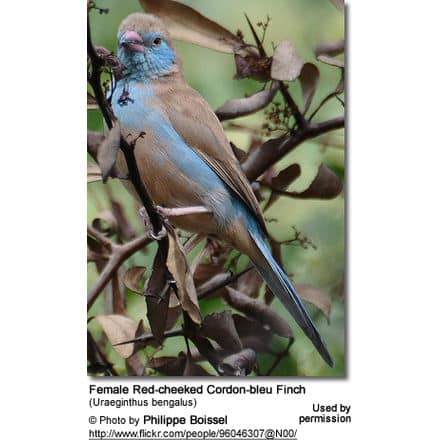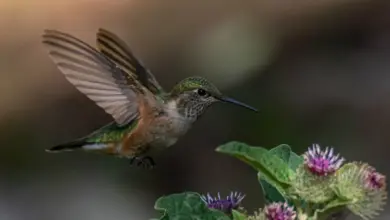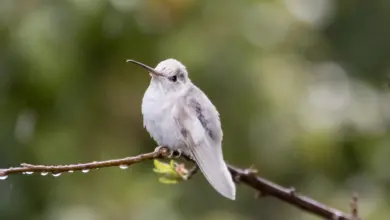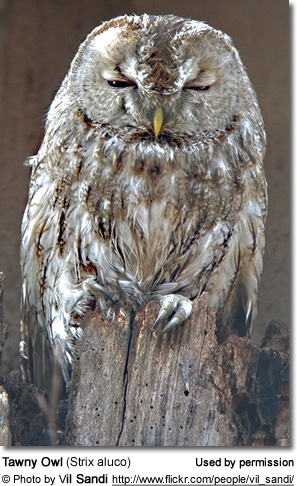Red-cheeked Cordon-bleu Finches
The Red-cheeked Cordon-bleu Finches (Uraeginthus bengalus) – also known as Red-cheeked Blue Waxbills, Uganda or Abyssinian Red-cheeked Cordon-bleus – are attractive, small African finches with bright red cheeks (hence their common name) and sky-blue plumage details.
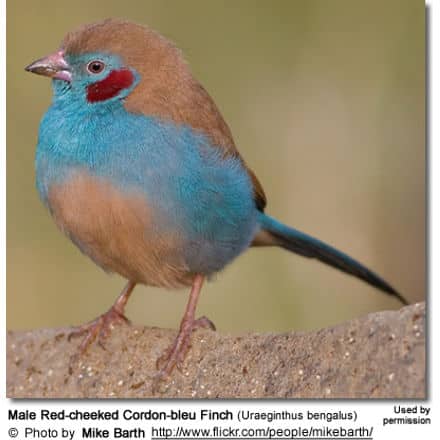
Distribution / Habitat
They are found in the drier regions of tropical sub- Saharan Africa, where they are common and widespread across much of central and eastern Africa. They are mostly absent from the northern half of the country.
The natural range of the Red-cheeked Cordon-bleu stretches from southwestern Mauritania south through the countries of Senegal, Gambia east through southern Mali, southern Niger in Western Africa; through southern Chad and southern Sudan in Central Africa, east through Ethiopia, northwestern and southwestern Somalia in East Africa, south to the southern Democratic Republic of the Congo and eastern Angola, east to northern and western Zambia, southern Tanzania and northern Mozambique in southern Africa.
These finches have also been introduced to the Hawaiian islands, where they are specifically found on the islands of Hawai?i (The Big Island) and Oahu (the third largest and most populated of the Hawaiian Islands).
One single record of 1924 exists in Cape Verde located in the central Atlantic Ocean off the coast of Western Africa and another one in the Maadi area in northern Egypt (mid-1960s). These are believed to be escaped cage birds.
They inhabit open grassland, savanna, bush or wooded areas and cultivated lands, generally avoiding forest interiors. They are found at elevations from 7,970 ft (2,430 m). They are also commonly found around human habitation, including suburban gardens.
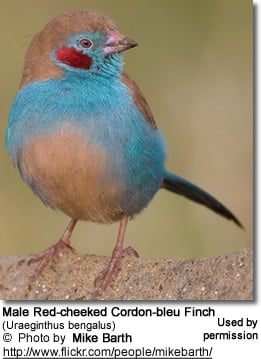
Subspecies and Ranges:
The four races are similar, with some differences in the amount of blue and underparts of the females.
- Uraeginthus bengalus bengalus (Linnaeus, 1766)
- Range: Western Africa – from southern Mauritania south to Senegal, Gambia, Guinea-Bissau, Guinea, Mali, Burkina Faso, Ivory Coast and Ghana east to southern Sudan, Eritrea and Ethiopia, south to western Cameroon, Central African Republic, northeastern Democratic Republic of Congo, Rwanda and Kenya, west of the Rift Valley, south to Lake Victoria.
- Kenya Red-cheeked Cordonbleu(Uraeginthus bengalus brunneigularis – Mearns, 1911)
- Range: Eastern Africa, from southern Somalia west to Kenya (from Baringo lake east to the coast) south to northeastern Tanzania, south to the North Pare Mountains and the Tanga region.
- [Uraeginthus bengalus littoralis – van Someren, 1922 – proposed race ] – Currently treated as one and the same with ssp. brunneigularis) – Range: Found in Eastern Africa, specifically in extreme southern Somalia south to southeastern Kenya and northeastern Tanzania
- Range: Eastern Africa, from southern Somalia west to Kenya (from Baringo lake east to the coast) south to northeastern Tanzania, south to the North Pare Mountains and the Tanga region.
- Congo Red-cheeked Cordon-bleu, East Coast Red-cheeked Cordonbleu(Uraeginthus bengalus ugogensis – Reichenow, 1911)
- Range: Maasai Mara National Reserve in south-western Kenya and Tanzania from Serengeti and Mount Kilimanjaro in north Tanzania to the western Rukwa region south to the Usanga Flats in southwest Tanzania and east to the city of Iringa).
- Uraeginthus bengalus katangae Vincent, 1934
- Range: South and south central Democratic Republic of Congo (southern Kasai and Katanga), south to northeastern Angola and east to northern Zambia.
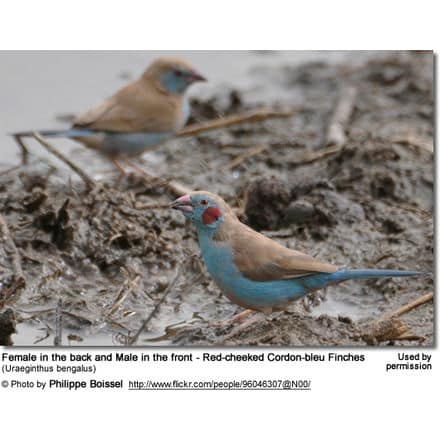
Description
Size
Red-cheeked Cordon-bleu measure 4.9 – 5.1 inches (12.5 – 13 cm) in length (including the tail) and weigh between 0.31 – 0.39 oz (8.9 – 11 g), with an average weight of 0.35 oz (9.9 g).
Plumage Details / Adults
Males:
- The plumage above is uniformly brown.
- Distinctive red patch on each cheek. Cheek patch varies in size from male to male.
- The chest, flanks and tail are pale blue.
- The abdomen is yellowish / buff.
Females
- Resemble the males, except for …
- a duller plumage
- less extensive blue feathering
- lack the red cheek patches of the male.
Other Physical Details
- Beak is deep pink.
- Legs and feet are flesh-colored.
Juvenile Description
Immature birds resemble females, except for …
- the blue being restricted to the face and throat.
- their bills are black
- Juvenile males resemble females, except for duller plumage
- Juvenile females have less extensive blue coloring than immature males.
Mutations
Several mutations have occurred in captivity (including the attractive “pied” mutation featured below).

Behavior / Disposition
- Generally peaceful and quiet, but protective of their nests.
- Can grow quite confiding.
- Often seen feeding on the ground in urban areas.
Diet / Feeding
Red-cheeked Cordon-bleus mostly feed on grain, grass seeds and other seeds, as well as millets. Occasionally, they also eat beeswax.
When raising young in particular, they also take insects – as the chicks require a diet rich in protein to support their rapid growth.
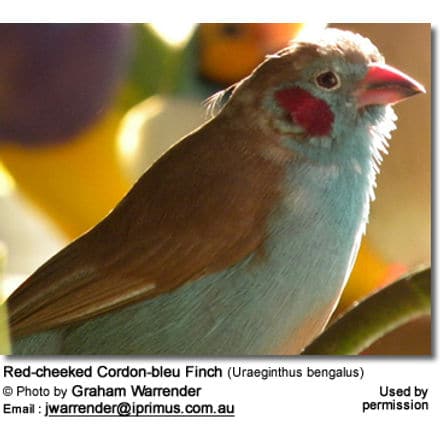
Breeding / Nesting / Aviculture
Their large, dome-shape nests are constructed out of twigs and other plant material with a side entrance. These nests are usually placed in trees or bushes.
The average clutch consists of 4 – 5 white eggs.
Aviculture
Red-cheeked Cordon-bleus are very popular in aviculture and are commonly kept in aviaries.
Unlike most other finches, which usually roost inside next boxes or in sheltered areas, the Red-cheeked Cordonbleus generally like to roost on open branches, which makes them susceptible to low temperatures.
For nesting, they usually accept the readily available finch nest boxes – although nest box preferences will vary depending on what the parents themselves were raised in.
During the breeding season, males can get quite aggressive towards other males.
These finches are not tolerant to nest inspections or disturbances in general when nesting, and often abandon any eggs or chicks. This should also be taken into consideration with respect to placement of the aviary.
Calls / Vocalizations / Sounds
Both the males and the females sing; although the males’ are usually more complex and generally longer, and they sing more often than females. Their contact calls are thin, high-pitched tsee-tsee and their songs are described as wit-sit-diddley-diddley-ee-ee.
Song Recording:
https://www.xeno-canto.org/embed.php?XC=95658&simple=1
Alternate (Global) Names
Chinese: ????? … Catalan: Bec de corall galta-roig … Czech: Motýlek rudouchý … Dutch: Blauwfazantje … Danish: Sommerfuglefinke … Estonian: Aed-lasuuramadiin … Finnish: Punaposkipeippo … French: Cordonbleu à joues rouges … German: Schmetterlingastrild … Icelandic: Blástrildi … Italian: Cordon blu guancerosse … Japanese: Seikichou … Lithuanian: Raudonskruostis vaékasnapis … Norwegian: Rødkinnastrild, Rødkinnet sommerfuglfink … Polish: Motylik krasnouchy … Russian: ?????????? / ??????????? ???????? … Slovak: Astrild / motýlik cervenosluchý … Slovenian: Metuljasta astrilda … Spanish: Azulito Carirrojo / de Senegal, Cordón Azul de Mejillas Rojas … Swedish: Rödkindad fjärilsfink … Swahili: Kitenduli Shavu-jekundu … Turkish: mavi mumgaga
Further Finch Reading
- Finch Information
- Index of Finch Species
- Photos of the Different Finch Species for Identification
- Common Health Problems of Finches
- Finch / Canary Diet / Nutrition
Beauty Of Birds strives to maintain accurate and up-to-date information; however, mistakes do happen. If you would like to correct or update any of the information, please contact us. THANK YOU!!!

